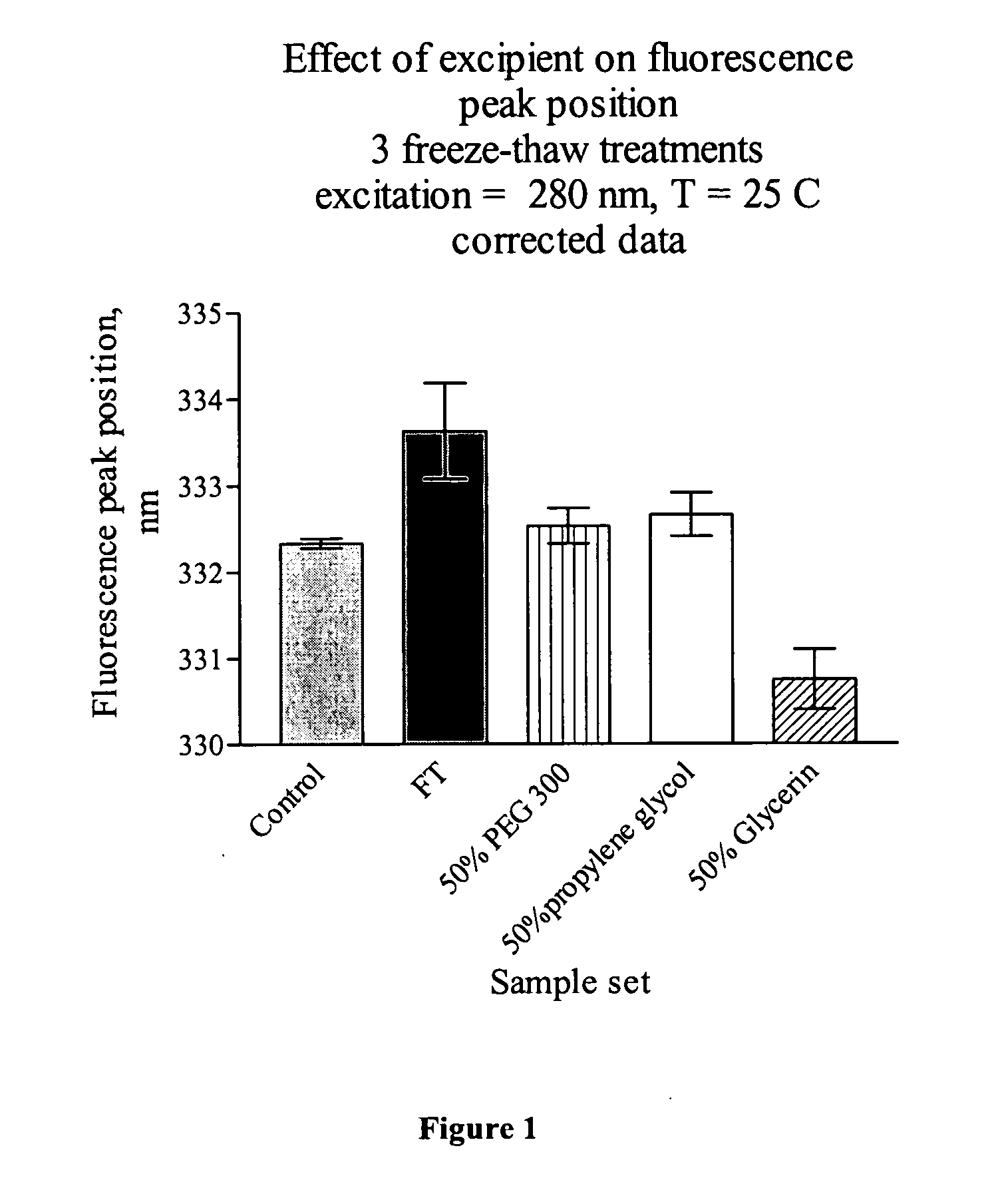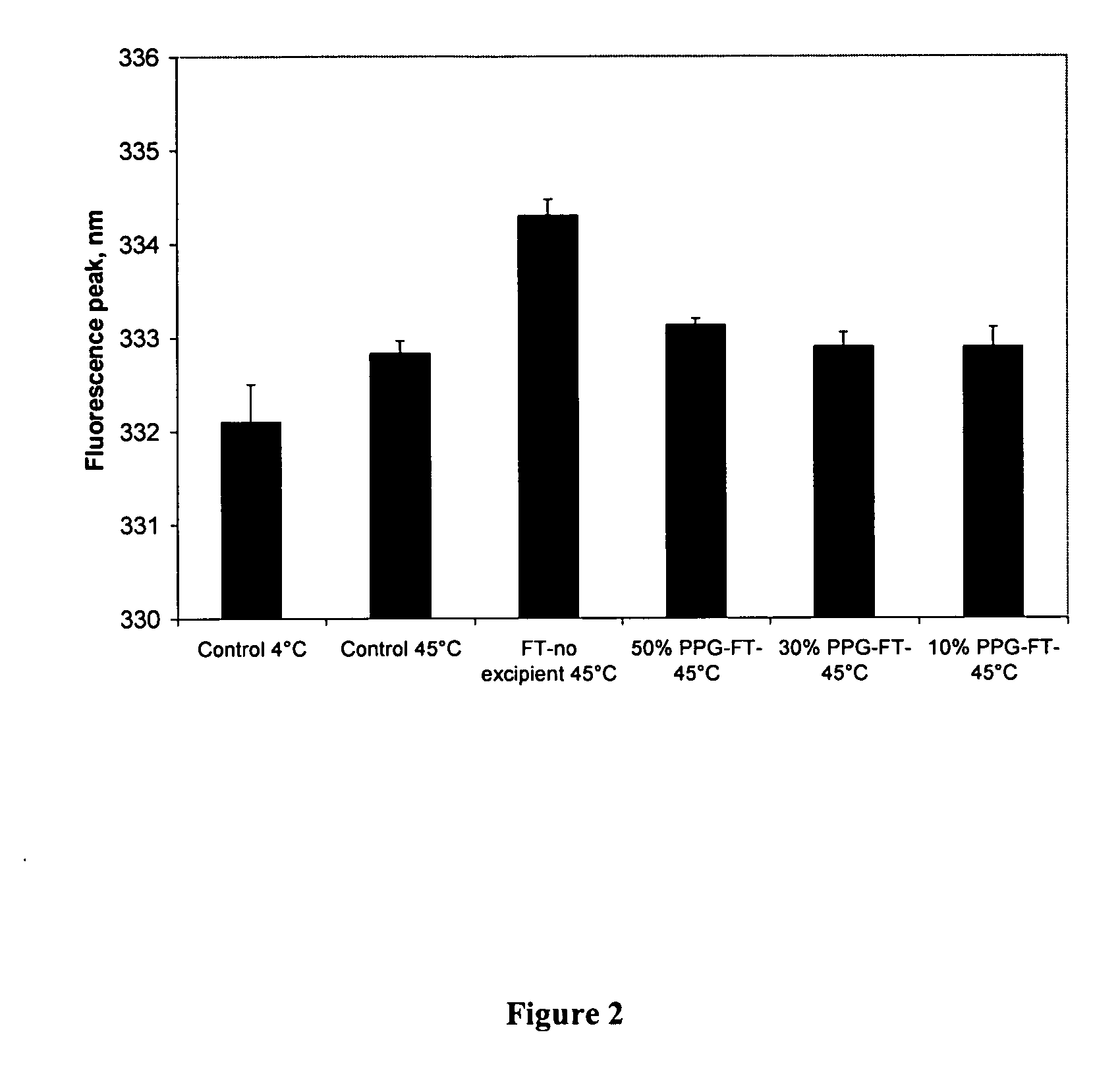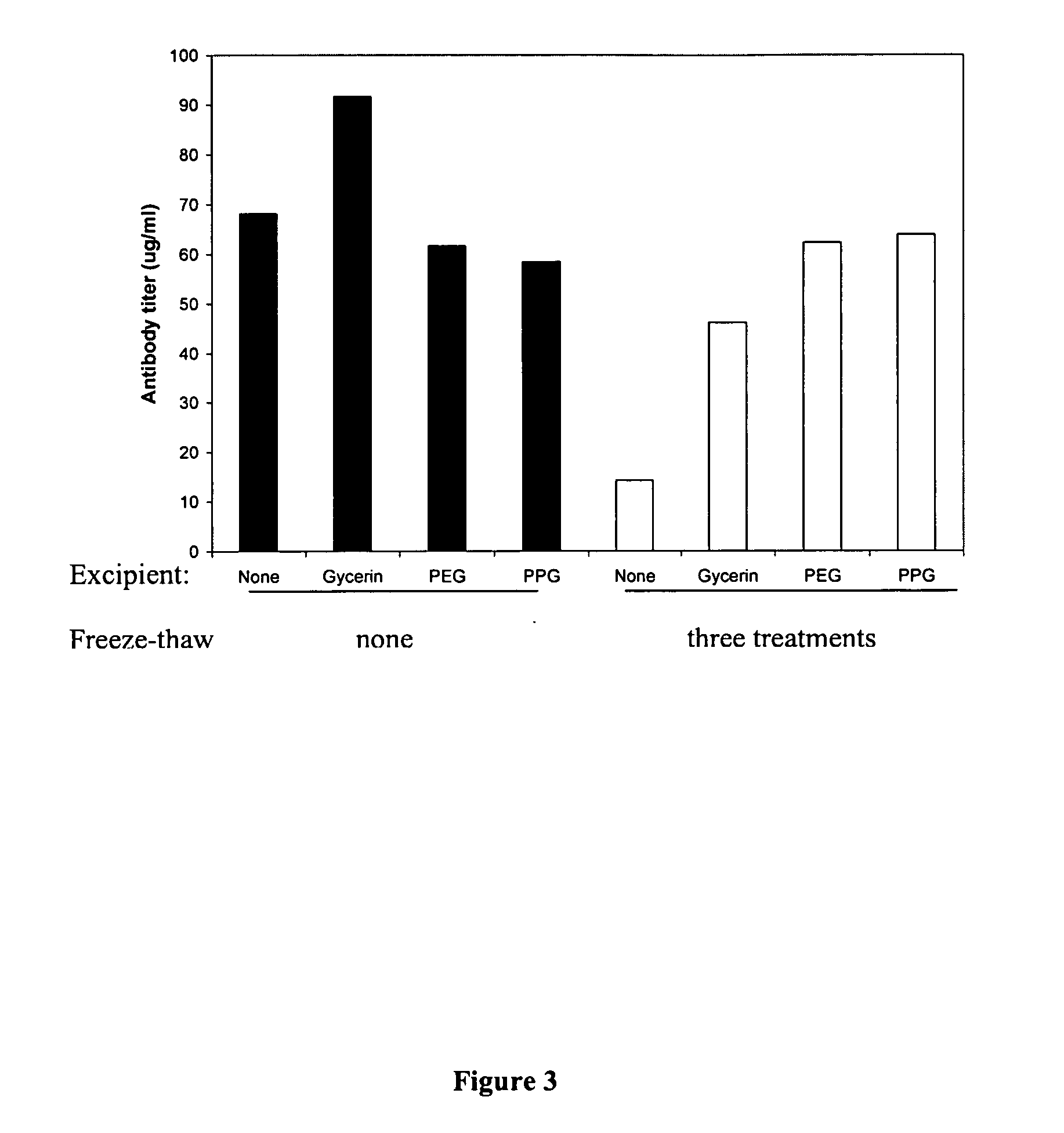Stabilization and preservation of temperature-sensitive vaccines
a temperature-sensitive vaccine and stabilization technology, applied in the field of temperature-protective agents, can solve the problems of loss of adjuvant effect, inability to stabilize, and inability to reverse damage to the physical structure of aluminum salt, so as to prevent damage to an adjuvant, inhibit microbial growth, and lower the freezing point of the firs
- Summary
- Abstract
- Description
- Claims
- Application Information
AI Technical Summary
Benefits of technology
Problems solved by technology
Method used
Image
Examples
examples
[0054] Example #1
Freeze-Prevention and Preservation of the Colloidal Suspension of Aluminum Salt Solution
[0055] Table 1 shows various concentrations of glycerin and propylene glycol, and the associated temperatures at or above which aluminum-adjuvanted vaccines would be expected not to freeze.
TABLE 1The freezing points of solutions resulting from various concentrations offreeze-protection excipients in water.% in water (v / v)*Propylene glycolGlycerin10 −3° C. −2.2° C.20 −8° C. −5.3° C.30−14° C. −8.8° C.40−22° C.−17.2° C.50−34° C.−21.4° C.60−48° C. −34° C.
*volume to volume
[0056] The objective of this study was to determine the protective effect of freeze protection agents on aluminum adjuvants. Preservation of the colloid nature of the adjuvant and the size of aluminum adjuvant particles are important for the adjuvant effect and the potency of the vaccine. Three freeze protection agents including glycerin, polyethylene glycol-300, and propylene glycol were evaluated for their ab...
example # 2
Example #2
Preservation of the Particle Size of Aluminum Adjuvant After Freeze-Thaw Treatments
[0061] Methods: This study used a quantitative assay to measure the particle size distribution of aluminum adjuvant before and after freezing-thaw treatments. A commercial human hepatitis B vaccine (Shantha Biotech, Hyderabad, India) was used. Each milliliter of vaccine contains 20 μg of yeast recombinant hepatitis B surface antigen adsorbed to 500 μg of aluminum hydroxide. Hepatitis B vaccine was formulated with saline, 50% glycerin, 50% PEG-300, or 50% propylene glycol and then subjected to three freeze-thaw treatments. Freezing took place in a −20° C. freezer for 18 hours and thawing took place on the laboratory bench at 24° C. for 4 hours. Hepatitis B vaccine with saline (no excipient) became frozen; all other formulations did not freeze. Particle sizing of samples following three freeze-thaw treatments was conducted using a Coulter Counter® Model Z1 (Beckman Coulter). Prior to beginnin...
example # 3
Example #3
Preservation of the Particle Size of Aluminum Adjuvant After Freeze-Thaw Treatments and Heat Exposure
[0063] An accelerated stability study was conducted to determine if the particle sizes of aluminum adjuvant that have gone through freeze-thaw treatment would change during storage. Hepatitis B formulations containing saline, 50% glycerin, 50% PEG-300, or 50% propylene glycol were subjected to three freeze-thaw treatments or kept at 4° C. (as control) and then all formulations were incubated at 66° C. for 14 days. Freezing took place in a −20° C. freezer for 18 hours and thawing took place on the laboratory bench at 24° C. for 4 hours. Control hepatitis B with saline (no excipient) became frozen; all other formulations did not freeze. The size distributions of the particles indicate that freezing in the absence of excipients is most detrimental to maintaining the particle size distribution (Table 4). When excipients (e.g., PEG-300, propylene glycol, or glycerin) were prese...
PUM
| Property | Measurement | Unit |
|---|---|---|
| freezing point | aaaaa | aaaaa |
| freezing point | aaaaa | aaaaa |
| temperatures | aaaaa | aaaaa |
Abstract
Description
Claims
Application Information
 Login to View More
Login to View More - R&D
- Intellectual Property
- Life Sciences
- Materials
- Tech Scout
- Unparalleled Data Quality
- Higher Quality Content
- 60% Fewer Hallucinations
Browse by: Latest US Patents, China's latest patents, Technical Efficacy Thesaurus, Application Domain, Technology Topic, Popular Technical Reports.
© 2025 PatSnap. All rights reserved.Legal|Privacy policy|Modern Slavery Act Transparency Statement|Sitemap|About US| Contact US: help@patsnap.com



